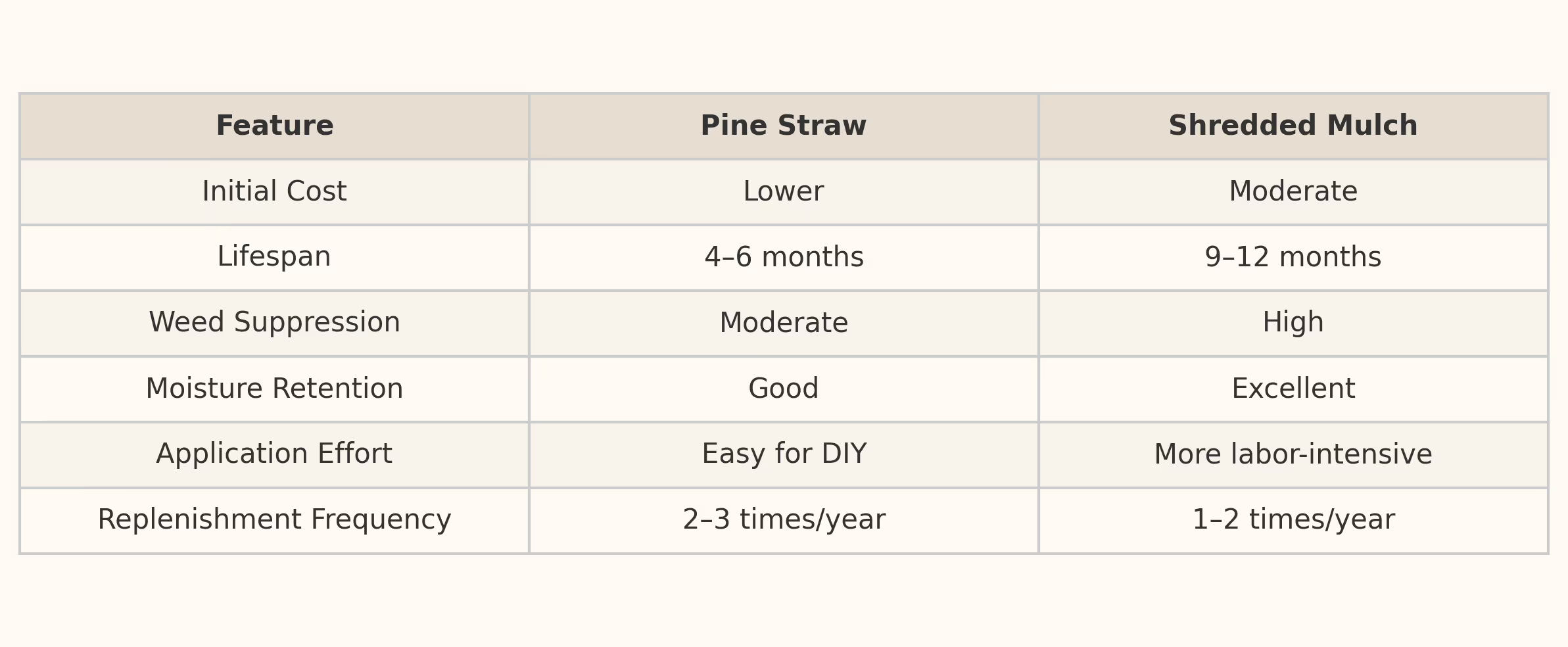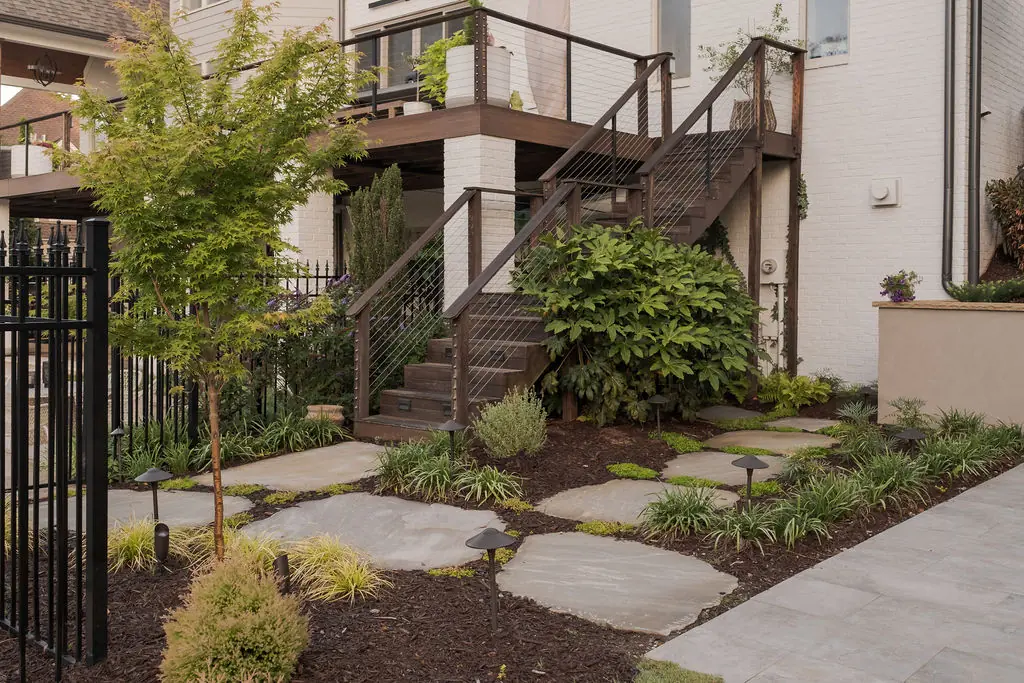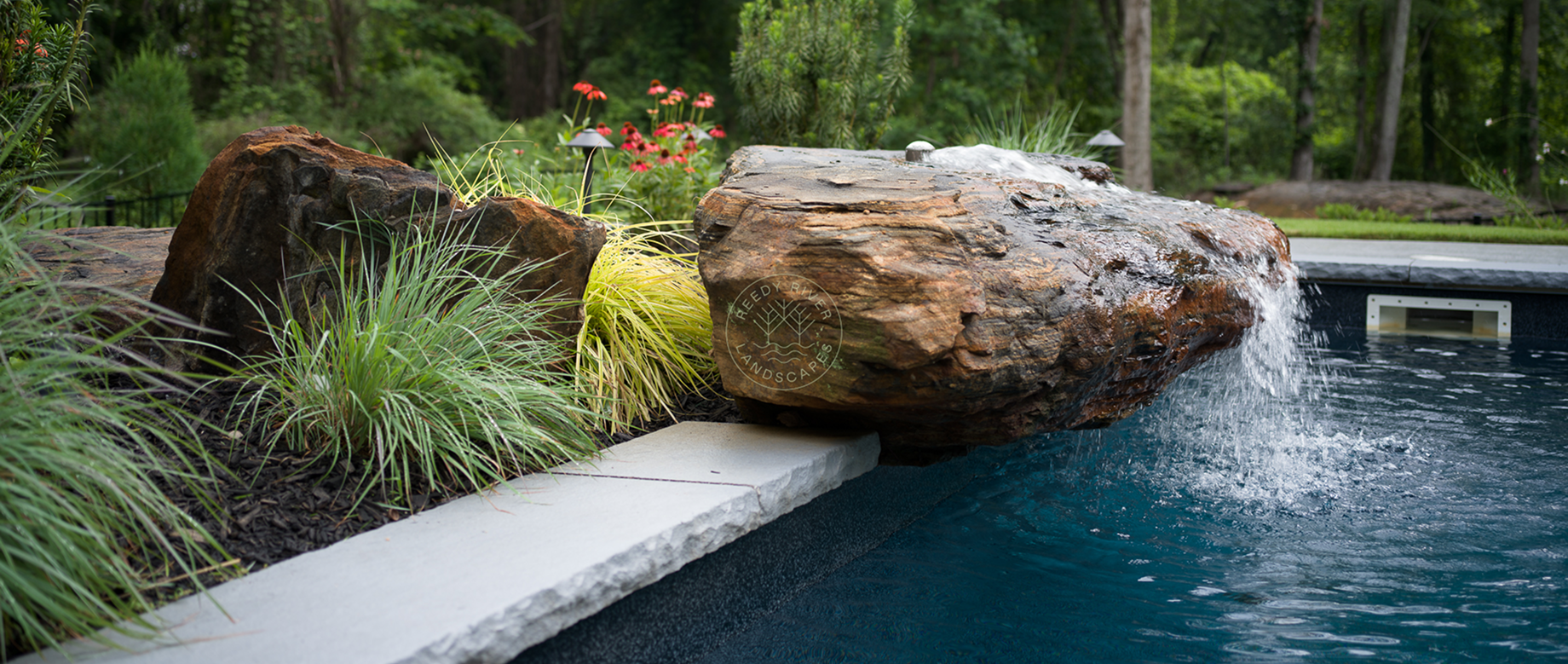Mulch vs Pine Straw: Which Type of Mulch Lasts Longer in Luxury Landscaping?
In this comprehensive guide, we delve into the benefits and considerations of each mulch type, aiming to arm you with the knowledge needed to make an informed decision tailored to your landscaping needs.
.avif)
Choosing the right type of mulch is more than a finishing touch — it’s a foundational element in luxury landscaping. The mulch you select can impact your soil’s health, your plants’ longevity, and the overall aesthetic of your outdoor space.
Two of the most popular choices are pine straw mulch and shredded hardwood mulch. Each has its own advantages depending on your goals: cost-efficiency, weed prevention, soil temperature regulation, or simply the look and feel of the space.
This guide breaks down the differences to help you select the best type of mulch for your lawn care, garden beds, or full-scale landscape project.
Pine Straw Mulch: Lightweight, Affordable, and Eco-Friendly
What is it?
Pine straw mulch is made from fallen pine needles, commonly longleaf or loblolly pine. It’s popular in the Southeast for its natural appearance and minimal environmental impact.
Key Benefits
- Easy to install, making it ideal for DIY landscaping
- Blends seamlessly into natural landscapes and wooded areas
- Allows airflow to plant roots and helps retain soil moisture
- Acts as a natural moisture barrier and weed barrier
- Affordable and widely available in the Greenville, SC & Asheville, NC areas
Considerations
- Needs replenishment more frequently — typically every 4–6 months
- Can be less effective at suppressing weeds long-term compared to heavier mulches
- May shift in heavy wind or rain if not properly tucked in
Best for:
- Garden beds beneath trees
- Rustic or natural-looking properties
- Homeowners looking for sustainable, easy-to-install ground covers
Shredded Mulch: Durable, Dense, and Visually Refined
What is it?
Shredded mulch is typically made from hardwood mulches or wood chips, available in various sizes and color-treated options.
Key Benefits
- Excellent at retaining moisture and insulating plant roots
- Provides long-term weed prevention through dense coverage
- Offers a polished appearance for formal gardens or modern outdoor designs
- Available in a range of colors and textures to match your aesthetic
Considerations
- Slightly more expensive upfront than pine straw
- Heavier material requires more labor or professional installation
- Color-treated mulch should be chosen carefully for eco-conscious applications
Best for:
- Flower beds in high-visibility areas
- Landscapes with sharp edging or clean lines
- Clients wanting long-lasting mulch with minimal upkeep
Cost, Longevity, and Maintenance

So, does mulch last longer than pine straw? Yes. In most cases, shredded mulch lasts longer due to its weight and density, making it a better fit for clients prioritizing longevity and lower maintenance.
Matching Mulch to Your Landscape

Pine Straw Works Well With:
- Informal, naturalistic landscapes
- Heavily wooded properties or sloped areas
- Clients prioritizing sustainability or ease of application
Shredded Mulch Works Well With:
- Contemporary or luxury garden beds
- Formal edging and structured flower beds
- Landscapes exposed to wind or heavy rainfall
Don’t forget to factor in square footage — large flower beds may require multiple cubic yards of material. Each mulch type covers different areas depending on depth, so accurate calculations are key to cost-effective application.
Final Considerations
Mulch vs Pine Straw isn’t just about appearance — it’s about your lifestyle, environment, and how you want your space to function over time.
If you're in an area with extreme weather swings, consider shredded mulch for better performance. If you prioritize eco-conscious landscaping with a soft visual finish, pine straw is an excellent choice — especially if sourced from longleaf pine trees or other native species.

